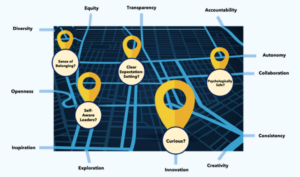
What Would Your Culture Map Reveal?
Sponsored by The Culture Platform What makes maps so special is they tell you exactly where to find places you want to visit. Wouldn’t it

Sponsored by The Culture Platform What makes maps so special is they tell you exactly where to find places you want to visit. Wouldn’t it

How do leaders create a culture that features contagious corporate altruism? Historically, shareholder capital return has been the holy grail of business success. Significant returns

Ed Catmull’s “Creativity, Inc.” offers effective strategies for leading creative teams. How can leaders use these to re-evaluate their own company dynamics?

Are you looking for that leadership silver bullet that will propel you past the competition? You can take public speaking courses and enroll in an

Many describe a great leader as one who has vision. A leader who is able effortlessly to conceptualize what strategy and direction is required to
Employee engagement is all the buzz, and rightfully so. When employees are engaged, they adopt the vision, values, and purpose of the organization they work
A while back, I dropped in on an innovative workspace for one of my software technology clients– it’s a very cool office space. An open-plan,
Nelson Mandela, Aung San Suu Kyi, Martin Luther King, Jr. and Abraham Lincoln—all incredible social leaders who impacted the world in which they operated. Their
We typically think of organizational charts as a set of vertically stacked boxes that represent people and their job descriptions. Additionally, the chart illustrates who
Originally posted by Chris Jones, a TalentCulture contributing writer. He is an IT Strategy & Change Management consultant, with a passion for driving new levels